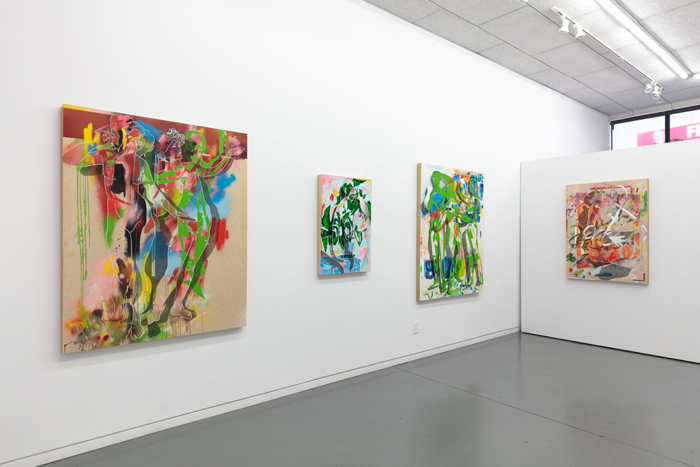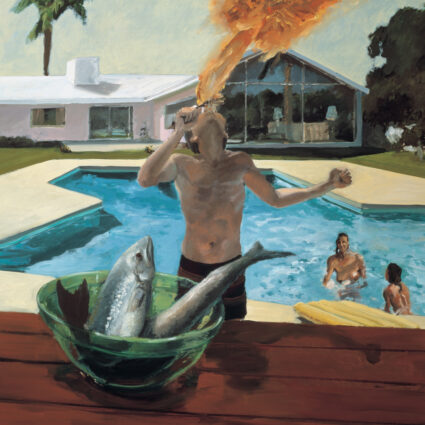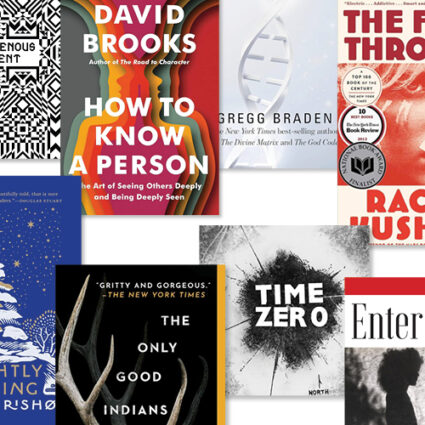Diego Rodriguez-Warner: Iteratives at Rule Gallery in Denver subverts and reinforces historical permutations of beauty.
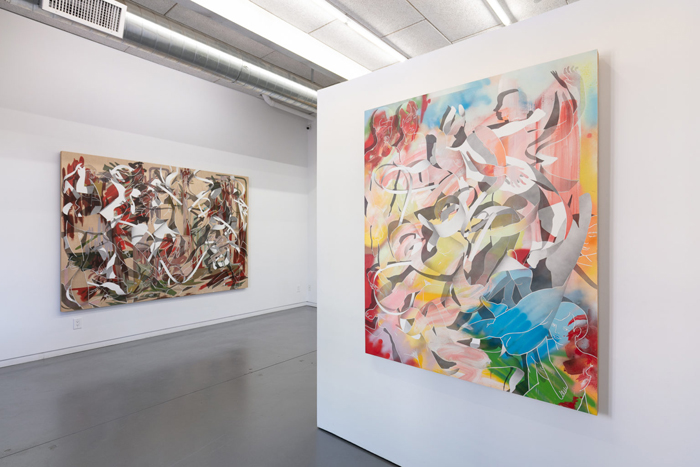
DENVER—Diego Rodriguez-Warner’s elegant linework unfolds across his art like a calligraphic signature, weaving through a menagerie of art historical references like ribbons of time. His paintings seem to unfurl, escaping the spatial confines of their plywood borders.
In Rodriguez-Warner’s latest body of work, Iteratives, on view at Rule Gallery in Denver through September 17, 2022, the Denver-based artist continues his exploration of trompe l’oeil figuration, but in an updated palette that feels, at least in comparison to his earlier monochromatic paintings, intentionally subversive.
Where previous bodies of work made use of a reductive palette and carefully constructed patterns, Rodriguez-Warner’s latest paintings incorporate bursts of orange and hot pink, chroma green, blood red, and cerulean blues. The green is a nod to Rodriguez-Warner’s process—it’s the same color as the artist tape he employs to construct his figures, thereby stripping the layers of his surrealist style to its humble, hand-taped origins.
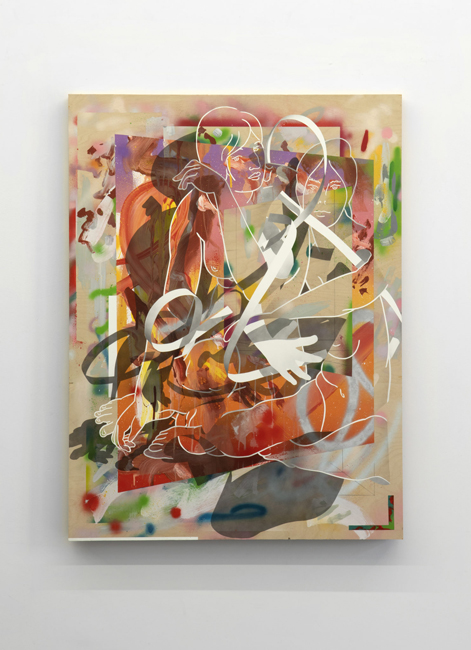
Rodriguez-Warner’s compositions are extraordinarily complex, but drawn from “real life,” in a sense. He builds and photographs paper maquettes as visual references—a modestly analog process that harkens to early modernism and is, itself, an iteration of the finished piece.
Rodriguez-Warner, born in 1986, is already a master at transforming a three-dimensional model into a two-dimensional composition, although his paintings seem to exist somewhere in between. “I cut apart all these European and imperial artists,” Rodriguez-Warner explains, “and then I reconfigure them into much more fraught images.”
By doing so, he seeks to dismantle the superficial bourgeois narratives embedded in the art historical canon while still paying tribute to its protagonists (Henri Matisse) and antiheroes (Ernst Ludwig Kirchner).
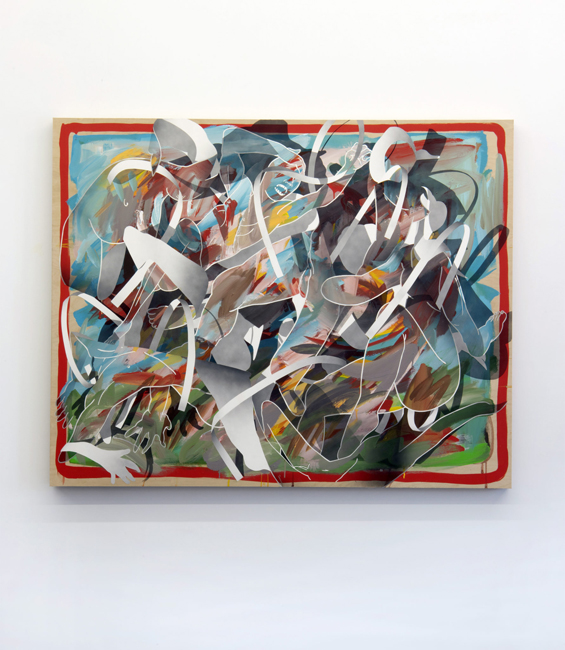
The artist’s hand is, as always, omnipresent, a reminder of his technical training at the Rhode Island School of Design in Providence. Rodriguez-Warner, a 2020 Joan Mitchell Foundation fellow, says the white outlines of his figures are meant to invoke the generic illustrations of vintage industrial manuals, but it’s the confluence of deceptively familiar forms that makes space for interpretation.
“I’m accumulating all these gestures,” he says, “and, by being in proximity with each other, they speak to a larger constellation of meaning.”
Rodriguez-Warner’s use of spray paint to render his abstract color fields anchors this series firmly in the present—it’s also another way to subvert his own artistic tendencies and introduce improvisation as an aesthetic tool. And, while these works are still aesthetically-pleasing, they do require more processing than his previous works, in which color and form were clearly delineated, and not forced to compete with each other.
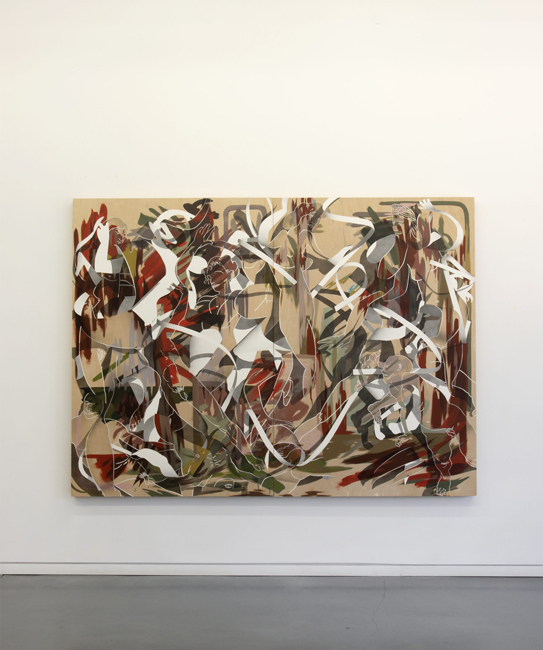
“Beauty has always been one of the pillars of my work,” he says, “but, with these paintings, I wanted to try to push past being ugly, or being a mess, and back into beauty.”
His gallerist, Valerie Santerli, supports Rodriguez-Warner’s impulse, saying that the abstraction displayed across the exhibition was a risk for the artist, but also a natural response to the precarity and unpredictability of the last few years.
“We’re not interested in artists regurgitating work once it becomes comfortable and easy,” explains Santerli. “We look to artists because they are eight to ten years ahead of our time. That’s the nature of an artist’s brain.”
While Iteratives undeniably breaks with the cult of beauty that Rodriguez-Warner’s previous paintings so effortlessly navigated, Santerli believes that this body of work also reveals a certain vulnerability that reflects the current human condition, exhausted from years of pandemic, unsure of what’s to come. It’s precisely that vulnerability that invokes a more nuanced definition of beauty—messy and emotional, flawed but authentic—an honest and unapologetic depiction of what it means to be alive.
